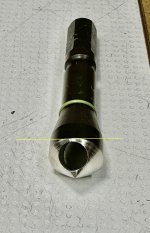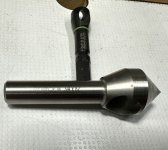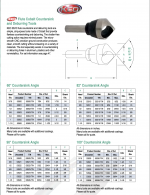hdv
Member
I noticed my Festool QLS 2-8 CE countersink is in need of sharpening. As I haven't done this before I thought to look it up, but I am getting differing recommendations. Some recommend removing material from the outside with a bench grinder, while others recommend filing the through hole with a diamond file. I know there are some members here that are a lot more knowledgable than I am when it comes to metalworking, so I'd like to ask here: how do you guy sharpen these countersinks?






